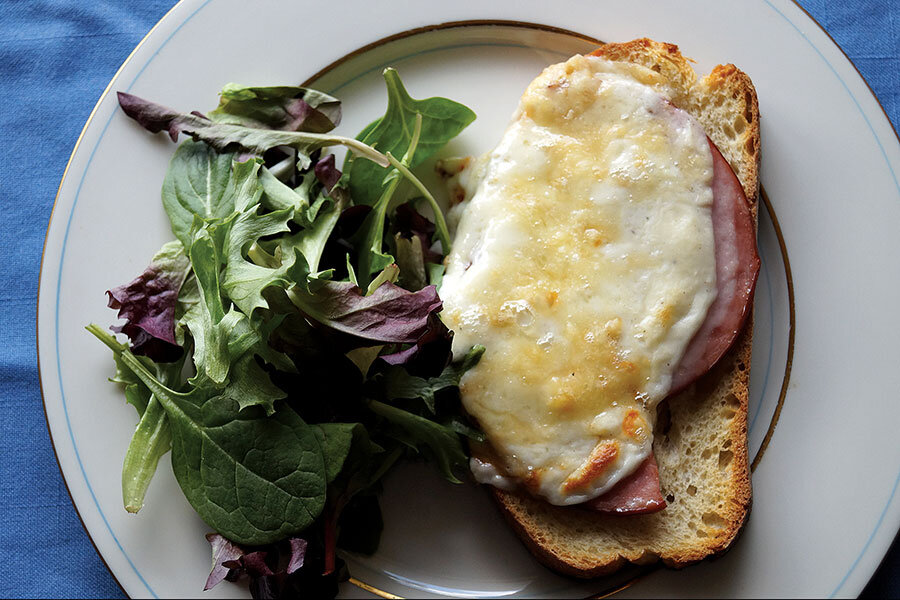Toast for the new year
Loading...
Sliced bread has been getting a bad rap for the past decade or so. Once considered the basic food for feeding the hungry, the humble loaf has been pushed aside by kale power smoothies, Greek yogurt, bone broth, and countless other food fads that seem to last about as long as a drop of water on a hot stove.
But despite the fashionable gluten-free and carb-free cookbooks that proliferate on bookstore shelves these days, bread recently has been finding new acceptance in a different form: as toast. Since toast has been around nearly as long as bread and the open flame, it’s hard to say exactly when it became newly trendy. But a couple of years ago, San Francisco hipster restaurants caused a stir when they started selling thick slices of “artisanal toast” for $3 to $7 as the ultimate comfort food.
When the trend came into focus, it was alternately derided by critics as another sign of the end times in a consumer culture that elevates the ordinary to the precious, and embraced by restaurant chefs as a blank canvas for delivering savory and sweet creations – the more exotic the better.
Think of thick, crunchy toast topped with fig jam, goat cheese, and chopped walnuts; shrimp atop mashed avocado sprinkled with salt and lime juice; or mascarpone with crumbled bacon and slivered grapes.
The possibilities seem endless.
When a friend invited me over for a simple lunch recently and served up croque-monsieur, a French comfort food, I realized that if created as a tartine (an open-faced sandwich), croque-monsieur neatly straddled two trends: less bread, fancy toast.
Croque-monsieur, a delicious combination of ham and Gruyère cheese on toasted bread and covered with a béchamel sauce, first appeared on menus in Paris around 1910. Some variations dip the bread in egg before baking it. Often the sandwich has additional cheese atop the bread to create a melty, cheesy crust. The version that adds a fried egg on top, said to resemble a lady’s hat, is called the croque-madame.
Béchamel is simply French for “white sauce,” a medium-thick sauce made from hot milk and flour. Béchamel not only has long been used by home cooks to disguise leftovers, but it’s also the base for creamy comfort foods and soufflés.
To ensure that your béchamel sauce doesn’t get lumpy, take the extra step of heating the milk in a separate saucepan before adding it to the melted butter and flour. (See recipe.)
In minutes, you’ll have a warm, it’s-so-old-it’s-new-again lunch that’s been enjoyed since before the invention of pre-sliced bread (in 1928).
Open-faced croque-monsieur
For the béchamel:
2 tablespoons unsalted butter
2 tablespoons all-purpose flour
1-1/4 cups hot milk
Salt and freshly ground pepper, to taste
Ground nutmeg, to taste
For the tartines:
4 thick slices of country-style bread
8 slices of cooked ham
2/3 cup grated Gruyère cheese
PREPARATION: Preheat oven to 450 degrees F. Lightly grease a baking sheet with butter and set aside.
To make the béchamel: Add butter to a heavy-bottomed saucepan and melt over low heat. In a separate small saucepan, heat milk over low heat (do not let it come to a boil). While the milk heats, whisk the flour into the melted butter, stirring constantly, until the mixture smells nutty and fragrant, about 1 minute. Do not let it brown. Slowly add the hot milk to the butter-flour mixture, whisking constantly until the mixture is smooth. Increase the heat to medium, bring to a simmer, and season with salt, pepper, and nutmeg. Continue to cook, stirring occasionally, until the sauce is thickened, about 3 minutes. Remove from heat.
To assemble the tartines: Place the bread on the greased baking sheet, and top each slice with two overlapping slices of ham. For each tartine, spread
1 to 2 tablespoons of the béchamel over the ham (more, if desired). Sprinkle grated cheese evenly over the béchamel. Bake until the cheese melts and evenly browns, and the bread is golden and crisp on the bottom, about 12 to 15 minutes. Serve immediately with a simple salad of mixed greens.






